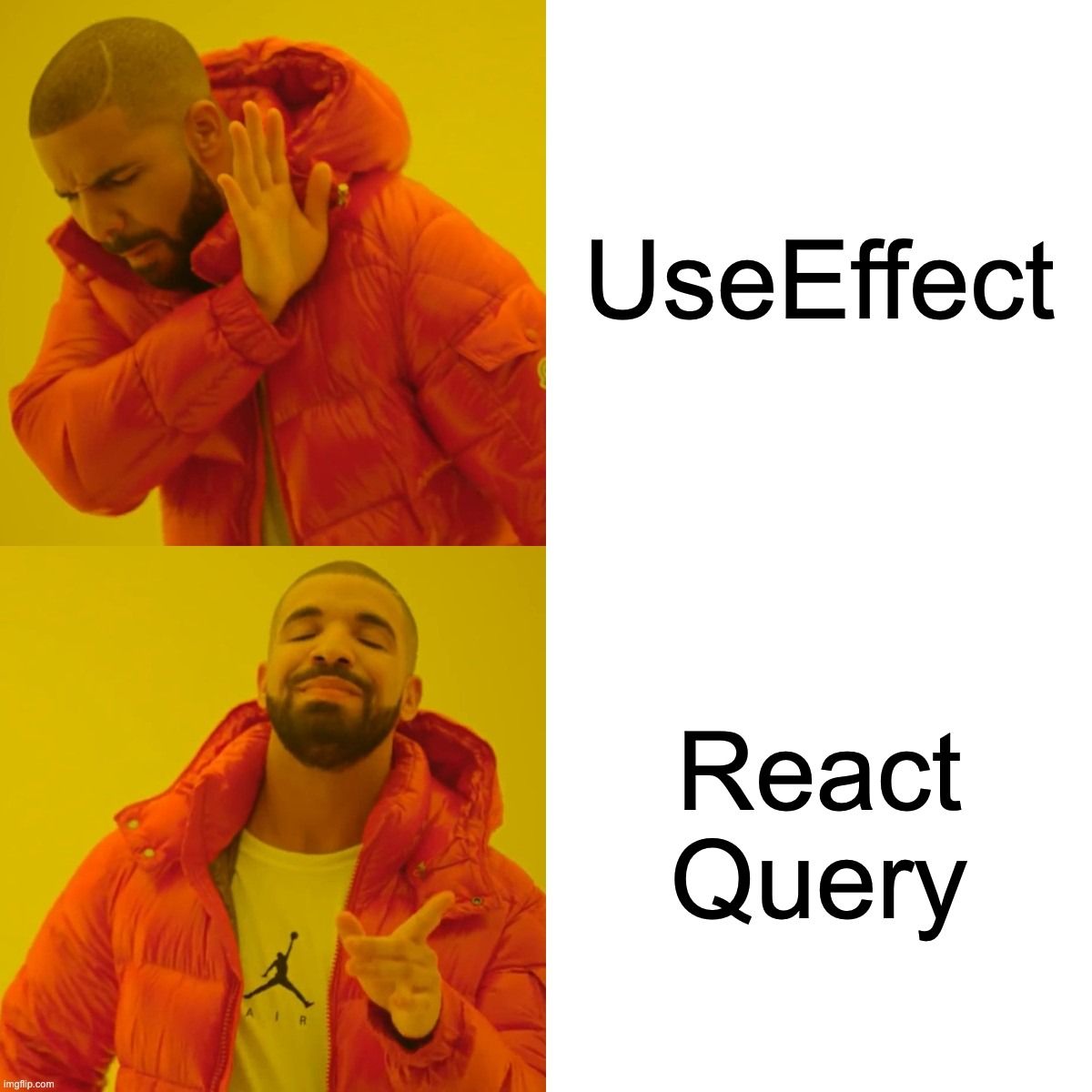STOP using UseEffect for data fetching
 Hamza Mellahi
Hamza Mellahi
UseEffect hook is a good choice for fetching data in small apps. However, for larger, more complex applications, it has several limitations.
𝗟𝗶𝗺𝗶𝘁𝗮𝘁𝗶𝗼𝗻𝘀 𝗼𝗳 𝘂𝘀𝗲𝗘𝗳𝗳𝗲𝗰𝘁 𝗳𝗼𝗿 𝗱𝗮𝘁𝗮 𝗳𝗲𝘁𝗰𝗵𝗶𝗻𝗴:
𝗡𝗼 𝗰𝗮𝗰𝗵𝗶𝗻𝗴: Fetches data after every component mount.
𝗟𝗼𝗮𝗱𝗶𝗻𝗴 𝘀𝘁𝗮𝘁𝗲 needs to be tracked manually.
No built-in error handling.
As a result of the above limitations, you often write a lot of repetitive code to handle loading states, errors, and data management.

𝗪𝗵𝗮𝘁'𝘀 𝘁𝗵𝗲 𝗮𝗹𝘁𝗲𝗿𝗻𝗮𝘁𝗶𝘃𝗲?
Use data-fetching libraries like 𝗥𝗲𝗮𝗰𝘁 𝗤𝘂𝗲𝗿𝘆.
𝗞𝗲𝘆 𝗳𝗲𝗮𝘁𝘂𝗿𝗲𝘀 𝗼𝗳 𝗥𝗲𝗮𝗰𝘁 𝗤𝘂𝗲𝗿𝘆:
Access and manipulate fetched data from anywhere in your app.
Built-in caching: Fetched data are cached and reused.
Automatic loading state management.
Built-in error handling.
Support for pagination and infinite scroll.
Data prefetching.
Conclusion
By using data fetching libraries like React Query, you can significantly reduce boilerplate and improve the efficiency of data fetching in your React applications.
Subscribe to my newsletter
Read articles from Hamza Mellahi directly inside your inbox. Subscribe to the newsletter, and don't miss out.
Written by

Hamza Mellahi
Hamza Mellahi
I am Hamza, a front-end developer based in Morocco 🇲🇦. I specialize in crafting engaging interfaces and optimizing web performance.